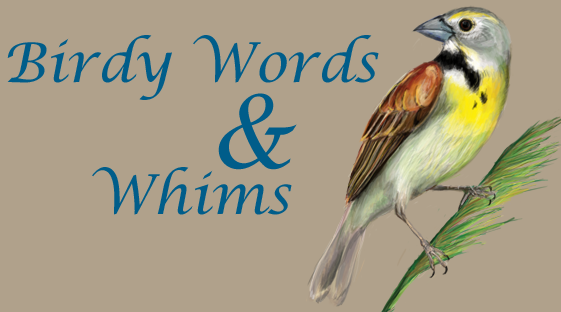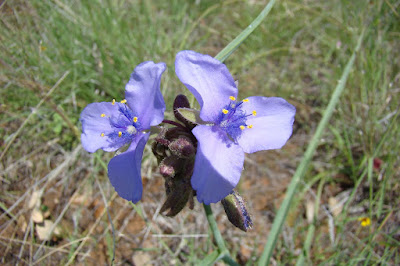Hello! I am now finished with my MAPS training and I am now onto the regular banding season. I'm banding at Camp Bowie in Brownwood, Texas for the rest of the summer. Brownwood is a pretty small town but they have a Wal-mart and a Dairy Queen, so at least we have the necessities. We don't have internet at home so I have to drive about 5 miles away to a coffee shop to update my blog. I won't be able to update everyday, but I will try to get access when possible!
Today was our second day banding at Camp Bowie. We got there before dawn around 5am. It is kind of scary setting up everything in the dark, but at least we know we are safe within the gates of the National Guard training facility. I have never been on an army base before but the parts we are using are mostly just woodland. Today's banding took place in a mesquite woods which had burned last year. Now it has turned into kind of a marshy grassland with lots of dead trees. Banding was great here, although since it was mostly open, the nets were exposed to a lot of wind which is not ideal for catching birds. Today we got a total of 19 birds including two recaptures. The highlights were two Dickcissels and a Lark Sparrow. I had never gotten to see these birds in the hand before. Luckily they are super common in this area so we will probably be seeing them all summer long.
I still have a few more pictures from training I wanted to put up so below I have a Least Flycatcher of the genus of Very Confusing Empidonax Flycatchers. He can be distinguished by his white eyering. Otherwise most of these flycatchers look a lot alike. Below that, I have a picture of a female Black-and-white Warbler. Both are migrating through the area.
 Least Flycatcher
Least Flycatcher
 Black-and-white Warbler
Black-and-white Warbler On our four hour drive from training to Brownwood, we saw quite a bit of wildlife including a coyote and a turkey that ran across the road, a jack rabbit, and a couple of Harris's Hawks as pictured above on a telephone wire. Another common sighting on telephone poles was the Crested Caracara. They are really beautiful birds! I didn't get a picture but I might still see some here in Brownwood. More on the road sightings were Turkey Vultures, Black Vultures, Greater Roadrunner, Scissor-tailed Flycatchers and once we saw a Great Horned Owl on another telephone pole.

Onto today's banding effort, one of my favorite captures was this male Yellow Warbler. We originally caught two but one accidentally escaped. They were singing and chasing each other around the area. Even though they are acting territorial, Yellow Warblers only migrate through Texas so they won't be around for long.
 Yellow Warbler
Yellow Warbler Dickcissel
DickcisselAs I said before, we got two Dickcissels this morning. I love this bird! And of course they are very beautiful in the hand. I think we will be seeing quite a few of these because they were singing absolutely everywhere here.
 Vermillion Flycatcher
Vermillion FlycatcherWe captured two Vermillion Flycatchers this morning. The above pictured is a second year male. The adult will be much more red all over the body. They are very very brilliant in color. The rest of the birds we got included a very messy Carolina Chickadee, Painted Buntings, Bewick's Wren, Common Yellowthroat, Eastern Bluebird, and three female Cowbirds. The Bluebird and the wren were both recaptures. Overall banding has been pretty successful, the bird have been super active and the weather hasn't been too bad yet.
Four more days of banding and getting up at 4:30am until I get my first day off since I've been here!
 Bushtit
Bushtit  We have gotten 5 bushtits in our nets in the past 10 days. They are just adorable! But kind of a pain to get a hold of since they are so small!
We have gotten 5 bushtits in our nets in the past 10 days. They are just adorable! But kind of a pain to get a hold of since they are so small! I actually was not expecting to get this bird at all. It was not on our list of breeding birds in the area, but here it is! Most of the wrens in the USA are about 4-5 inches from tail tip to beak but this one is a whopping 8.5 inches long.
I actually was not expecting to get this bird at all. It was not on our list of breeding birds in the area, but here it is! Most of the wrens in the USA are about 4-5 inches from tail tip to beak but this one is a whopping 8.5 inches long.






















 Yellow-billed Cuckoo, back and front
Yellow-billed Cuckoo, back and front Ovenbird
Ovenbird




